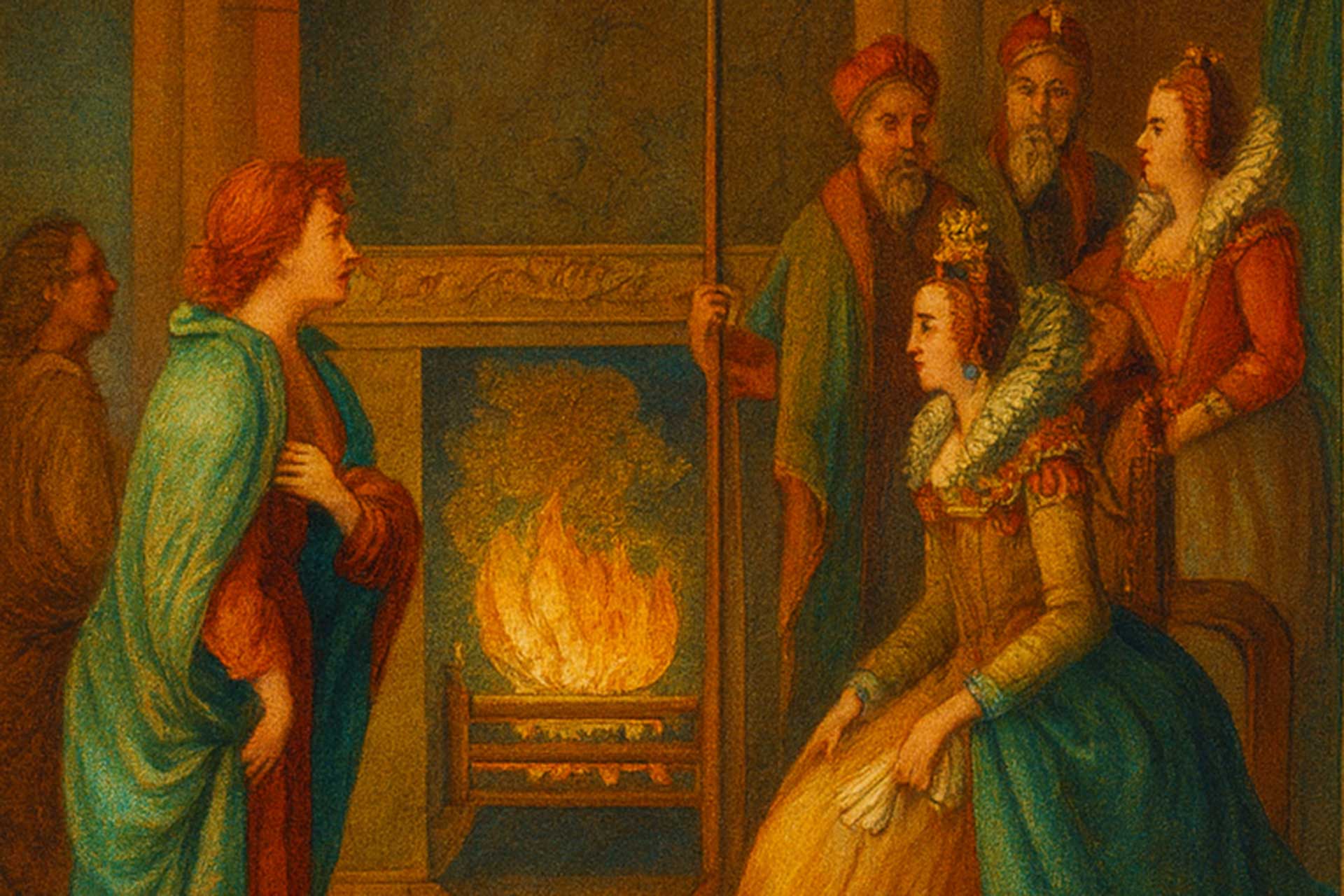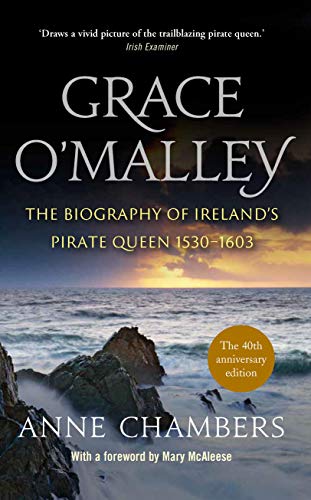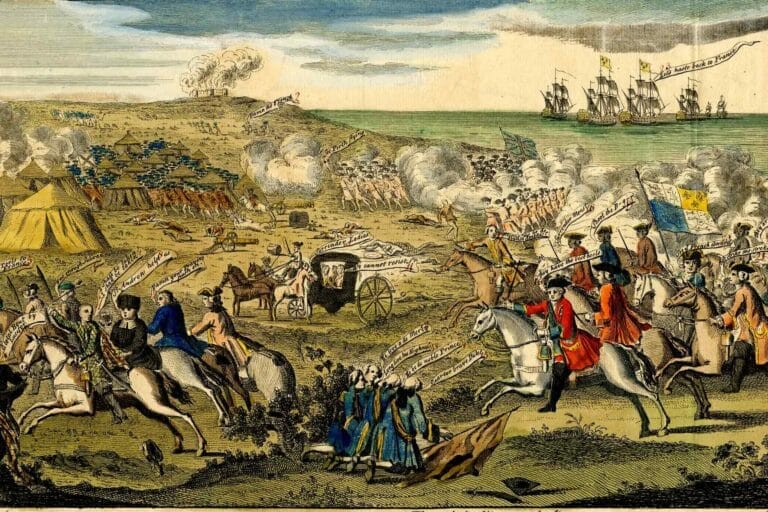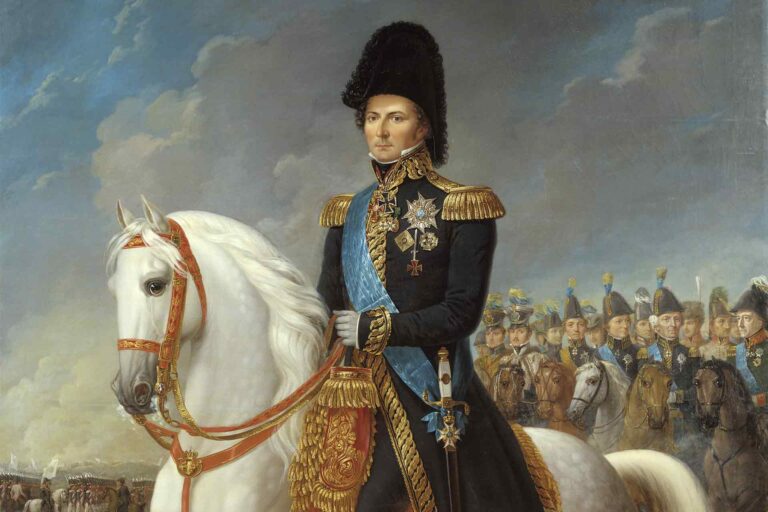Grace O’Malley the Pirate Queen of Ireland
In the stormy waters of 16th-century Ireland, where clan rivalries raged and English forces pressed in from across the sea, one woman rose above the tide. Grace O’Malley, also known as Gráinne Mhaol, defied the rules of her time to become a fierce leader, a skilled navigator, and a pirate queen whose story still captivates centuries later. Born into the powerful O’Malley clan along the west coast, she took to the sea not as a passenger but as a commander. Her life would become the stuff of legend—equal parts history and myth.
This article explores the remarkable journey of Grace O’Malley, from her noble roots to her daring raids and political battles. As England sought to tighten its grip on Ireland, Grace charted her course—leading men in battle, building alliances, and even negotiating face-to-face with Queen Elizabeth I. Her story is one of resistance, survival, and legacy.
Early Life and Noble Heritage
Grace O’Malley was born around 1530 into the Ó Máille clan, a powerful seafaring family that ruled over the rugged coast of County Mayo in western Ireland. The O’Malleys were unlike most Irish clans of their time. While many depended on land for wealth and influence, the O’Malleys built their strength on the Atlantic. They were traders, sailors, and sometimes pirates, navigating both the sea and clan politics with skill. From an early age, Grace was exposed to this maritime world and its possibilities.
As a child, Grace showed a strong will and a fascination with sailing. While most daughters of noble families were expected to learn household duties, Grace knew the rhythms of the sea. Her father, Eoghan Dubhdara Ó Máille, was a respected chieftain and ship captain, and he often took part in voyages along the Irish coast and across to Spain and Scotland. Grace reportedly begged to join one of these trips, only to be told she couldn’t because her long hair would get caught in the rigging.
Legend has it that Grace responded by cutting off her hair, hoping this bold move would allow her to sail with the crew. This act earned her the nickname “Gráinne Mhaol,” or “Bald Grace,” a name that followed her for the rest of her life. While some historians view the tale as myth, it captures the determination that would come to define her character. Whether or not it’s true, the story reflects how early she challenged expectations placed on women.
Growing up along the harsh yet beautiful coast of Connacht, Grace was trained not only in navigation and trade but also in leadership. Clan life required constant negotiation, and the sea demanded both courage and precision. These early lessons shaped her into someone capable of commanding ships and dealing with foreign merchants, hostile clans, and later, English forces. Unlike most girls of her time, she was groomed for more than marriage—she was prepared to rule.
The O’Malley clan claimed descent from ancient Irish kings, and their autonomy allowed them to defy English authority longer than many others. They controlled several castles and dozens of ships, taxing those who passed through their waters. Grace’s upbringing among such wealth and power gave her a deep sense of entitlement and responsibility. She was born into a world where the sea was both home and battlefield.
In this setting, Grace learned how to lead in a male-dominated world. Her early years set the stage for the life she would lead—not just as a daughter of nobility, but as a commanding force on the Atlantic. Long before she became a symbol of Irish resistance, she was a girl shaped by salt air, clan loyalty, and the dream of mastering the sea.
Rise to Power
In her teenage years, Grace O’Malley married Donal O’Flaherty, heir to another powerful seafaring clan based in Connemara. The O’Flahertys were fierce and independent, known for their control of the western coastline and their raids on rival clans and merchant ships. Grace quickly took an active role in her husband’s maritime campaigns, proving herself not only brave but also highly capable. She earned the loyalty of O’Flaherty crews and commanders, gaining experience that would later serve her well.
Donal’s reputation as a warrior earned him the nickname “Donal of the Battles,” but it was Grace who built alliances, negotiated terms, and strengthened their fleet. When Donal was killed in a skirmish over Cock’s Castle—one of their strongholds—Grace did not retreat into widowhood. Instead, she took command. She defended the castle, rallied support, and eventually seized control of the fortress, which became a symbol of her leadership. Many viewed her not just as the widow of a chieftain but as a leader in her own right.
Following Donal’s death, Grace returned to her native Mayo and took control of her father’s fleet. She expanded her influence along the west coast of Ireland, launching raids, collecting tolls, and asserting authority over local waters. Her fleet reportedly included as many as 20 ships, manned by loyal sailors who trusted her command. She operated out of Clare Island and Clew Bay, using the strategic islands and castles as bases to control trade routes and coastal territories.
Grace O’Malley’s power was further solidified through a second marriage to Risdeárd an Iarainn Bourke, a chieftain from the Bourke clan. The union was as much a political move as a personal one. By marrying into the Bourkes, Grace extended her influence into inland territories and forged another key alliance. Though the marriage was short-lived, she retained control of his stronghold at Rockfleet Castle, which became one of her principal seats of power.
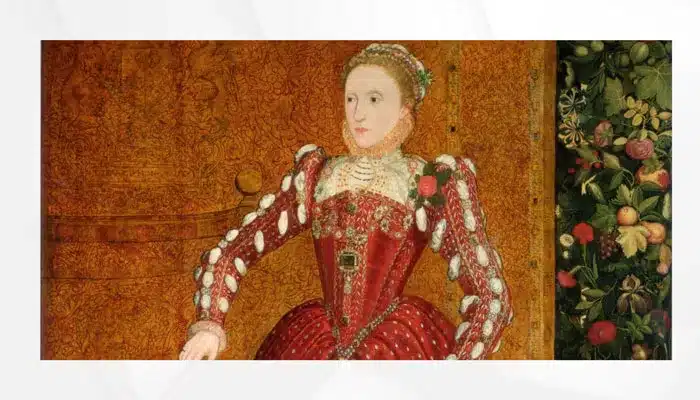
After separating from Bourke, Grace maintained the title “Lady Bourke” and exercised considerable authority. The marriage had served its purpose: expanding her reach and reinforcing her position among the Gaelic nobility. At a time when Irish lords were steadily losing ground to English rule, Grace stood as a rare figure who not only held her own but expanded her dominion through both strength and strategy.
By the height of her power, Grace O’Malley was no longer simply the daughter of a chieftain or the widow of a warrior. She was a pirate queen, a clan leader, and a political force along the Atlantic coast. Her rise was marked by determination, intelligence, and a refusal to be bound by the roles society prescribed for women.
Life as a Pirate and Clan Leader
As Grace O’Malley took command of her fleet, she established firm control over Clew Bay, a stretch of water dotted with over a hundred small islands along Ireland’s west coast. This natural harbor served as the perfect base for launching sea raids and collecting tolls from passing ships. From here, she governed both the waters and the surrounding land, acting as both chieftain and naval commander. Her ships—nimble and well-armed—could strike quickly and vanish into the coastal maze.
Grace’s fleet became known for daring raids along the Irish coastline and beyond. She targeted not only rival clans but also English merchant vessels, seizing cargo and asserting her dominance at sea. These actions weren’t simply lawless piracy—they were strategic efforts to maintain power and wealth in a volatile region. Her crews, loyal and hardened by years at sea, respected her ability to lead from the front. She was known to fight alongside her men and share in their risks and rewards.
While her reputation as a pirate grew, Grace also upheld her responsibilities as a clan leader. She mediated disputes, protected her lands, and kept order among her allies and vassals. Her leadership combined traditional Gaelic values with the practical needs of survival in a changing world. She understood the importance of both strength and diplomacy, navigating alliances and rivalries with skill.
Grace’s power depended not just on warfare but on maintaining influence through negotiation and family ties. She arranged marriages, settled feuds, and traded with merchants across the Irish Sea. Her seafaring lifestyle gave her access to foreign goods and information, which she used to support her clan and strengthen her position. As both pirate and matriarch, she blurred the lines between outlaw and noble.
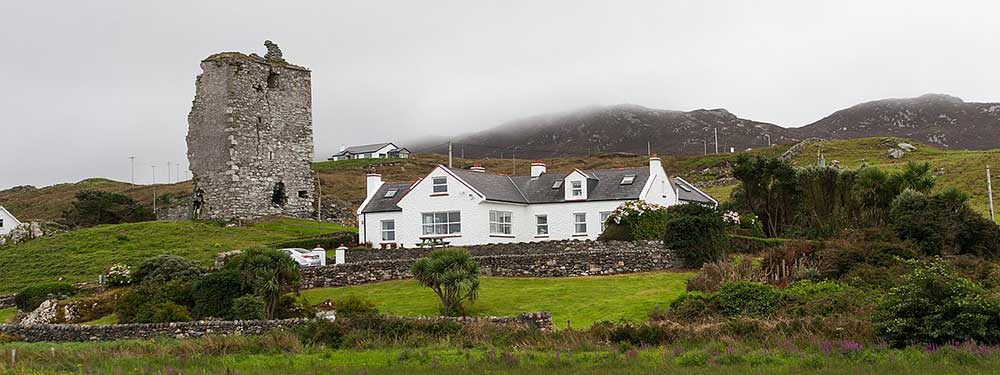
Her success relied on a delicate balance between aggression and control. Too much violence could invite retaliation, while too little might weaken her claim to leadership. Grace managed this balance with a rare mix of courage, calculation, and charisma. Whether leading a raid or commanding from her castle, she ruled with authority and a deep understanding of the forces that shaped her world.
In a time when few women held power, Grace O’Malley stood out not only for her boldness but also for her ability to command respect. Her life at sea was not a rebellion against tradition—it was a continuation of it, shaped by Ireland’s unique relationship with the sea and its long history of fierce, independent clans.
Conflict with the English Crown
As English control tightened over Ireland during the late 16th century, Grace O’Malley’s independence came under threat. Her raids on English ships and settlements, once part of routine clan warfare and seaborne survival, were now labeled acts of rebellion. The crown viewed her activities not as part of Gaelic tradition but as criminal offenses against English rule. These tensions escalated as the Tudor conquest of Ireland pushed further into the western provinces.
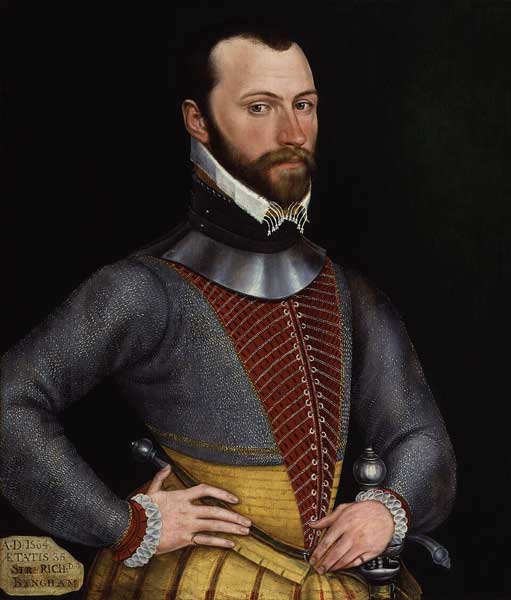
One of her most persistent adversaries was Sir Richard Bingham, the English governor of Connacht. Bingham was sent to impose order in the region and saw Grace not just as a pirate, but as a symbol of defiance against the crown. He confiscated her lands, harassed her allies, and pursued her family with ruthless determination. In official reports, Bingham described her as “nurse to all rebellions in the province for this forty years.”
Grace’s resistance was not without cost. She was imprisoned more than once—first by rival clans, and later by English forces. In one instance, her son and half-brother were taken hostage to force her compliance. Even under threat, Grace refused to submit fully. She continued to defend her holdings and strike back when possible, using both military strength and legal petitions to press her case.
The English push into Ireland reshaped the balance of power that had long supported clans like the O’Malleys. Colonization efforts drained local resources, disrupted trade, and weakened traditional clan authority. English garrisons, fortifications, and legal systems eroded the autonomy Grace had built over decades. Her castles were seized or attacked, her income from sea tolls dried up, and her fleet diminished in size and strength.
Despite mounting pressure, Grace fought to maintain her status and defend her family’s legacy. She appealed directly to the crown, bypassing local officials who viewed her as an enemy. This strategy, though risky, revealed her understanding of power and her refusal to be silenced. She would not let English interference erase her voice—or her claim to leadership.
Through these conflicts, Grace O’Malley became more than a regional power. She represented a fading way of life and a fierce defense of Irish sovereignty. Her battles with the English Crown marked her as both a political target and a cultural icon—one whose courage and cunning stood in stark contrast to the forces seeking to reshape Ireland by conquest.
Grace O’Malley’s Meeting with Queen Elizabeth I
By 1593, Grace O’Malley’s world had changed dramatically. Her lands were under siege, her income had been slashed by English interference, and Sir Richard Bingham had imprisoned her son, Theobald. Desperate to protect what remained of her power and family, Grace took the extraordinary step of appealing directly to Queen Elizabeth I. It was a bold and unusual move—an Irish chieftain and pirate queen requesting an audience with the English monarch.
The meeting took place at Greenwich Palace, and its uniqueness was not lost on either side. Two women, both rulers in their own right, sat face to face in a world dominated by men. Elizabeth was in her sixties; Grace, a few years older. Grace arrived dressed in fine clothes but reportedly refused to bow, insisting she recognized no queen of Ireland—only of England. The two spoke in Latin, a neutral language neither would have considered foreign.
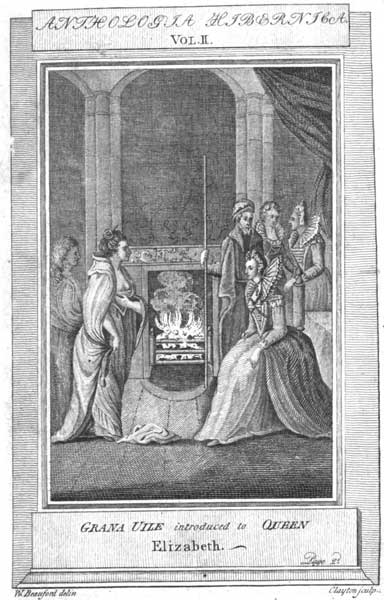
Despite their differences, the women found common ground. Grace pleaded for the release of her son and for the return of some of her seized property. She explained her raids as part of the Irish tradition and emphasized her loyalty to the crown, so long as she and her people were treated fairly. Elizabeth, impressed by Grace’s resolve, agreed to several of her requests. Theobald was released, and Grace was permitted to continue her maritime activities—within limits.
One of the most famous stories from the meeting involves Grace sneezing during their conversation. According to legend, when no one offered her a handkerchief, she requested one from Elizabeth. After using it, she threw it into the fireplace, shocking the court. Grace, however, had acted according to Irish custom—where used items were considered unclean and meant to be destroyed. The incident, whether entirely true or not, has become a vivid part of her legend.
The meeting was not a complete resolution to Grace’s struggles, but it marked a turning point. By securing her son’s freedom and some recognition of her authority, she preserved part of her legacy. More importantly, she became one of the only Irish leaders to negotiate directly with the English crown on her terms. The encounter remains a powerful symbol of courage, diplomacy, and cultural clash.
In a world where few women held power, the meeting between Grace O’Malley and Queen Elizabeth I was extraordinary. It brought together two formidable leaders, shaped by different worlds yet bound by shared strength. Grace did not return home defeated; she returned with dignity, a restored sense of authority, and her name forever etched into the pages of Irish and British history.
Later Years and Death
Following her meeting with Queen Elizabeth I, Grace O’Malley returned to the west of Ireland with a temporary sense of security. The release of her son, Theobald, and partial restoration of her holdings gave her room to continue governing her clan and managing what remained of her fleet. Yet the tide of English expansion did not slow. Fortifications increased, local lords were stripped of power, and traditional Gaelic leadership faced slow erosion under English law.
Despite advancing age, Grace continued to resist English encroachment where she could. She supported her sons in defending clan territories and reportedly took part in efforts to preserve local autonomy. Though no longer commanding ships in battle, she remained a political figure who inspired loyalty. Her experience, reputation, and resilience made her a symbol of Irish pride in an era of increasing control from London.
Over time, however, her influence began to wane. Younger leaders emerged, and the political landscape changed. The Nine Years’ War, which raged from 1594 to 1603, marked a final large-scale Gaelic effort to resist English rule. While Grace was not directly involved in that conflict, it occurred during her final years and reflected the fading hopes of the world she had once dominated. She likely watched with concern as the culture she fought to protect slipped further from view.
Grace O’Malley is believed to have died around 1603, the very same year as Queen Elizabeth I. The timing is striking, as if marking the end of an era for both Ireland and England. While Elizabeth died in a royal palace with the world watching, Grace likely passed in one of her strongholds along the Atlantic coast—perhaps Rockfleet Castle—surrounded by the sea that had shaped her life.
Her death was not widely recorded by English officials, which may have been deliberate. Grace had long been a thorn in their side, a reminder of Gaelic independence that refused to vanish quietly. Yet her story endured, passed down in Irish oral tradition and later rediscovered by historians. Though her world was changing, she remained true to the fierce independence that defined her people.
In the centuries since, Grace O’Malley has come to represent not only an influential leader but a bridge between two cultures. Her later years may have been quieter, but her legacy never faded. She remains one of Ireland’s most iconic figures—a pirate, a matriarch, and a rebel whose strength still echoes across the waves.
Legacy and Historical Significance
Grace O’Malley’s story endured long after her death, passed down through oral tradition as a symbol of Irish resistance and independence. In a time when English rule tightened its grip on Ireland, her life stood as proof that Gaelic leaders, especially women, could defy foreign control with courage and intelligence. She became a folk hero, celebrated in local legend for her bravery at sea and her refusal to bow to English authority.
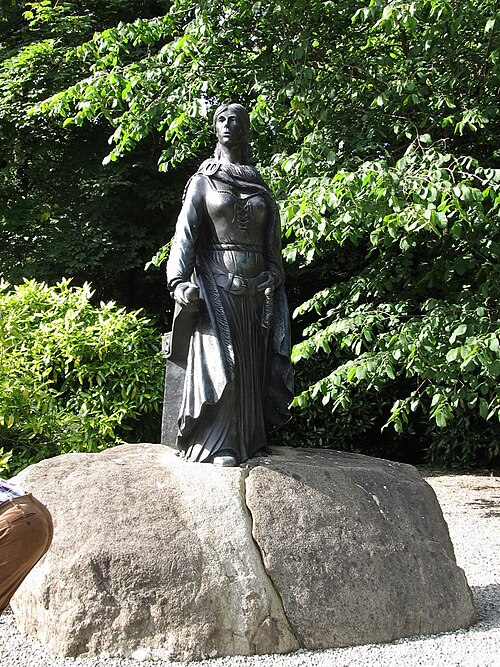
For centuries, historians largely ignored Grace or dismissed her as a romanticized outlaw. But in recent decades, scholars have reexamined her life using state papers, clan records, and accounts of her 1593 meeting with Queen Elizabeth I. These sources paint a more nuanced portrait of a capable leader who skillfully navigated the shifting politics of her time. Far from being a rogue pirate, she was a political operator and protector of her people.
Grace’s cultural impact continues to grow. She has inspired numerous biographies, historical novels, and folk songs, particularly in Ireland. Statues in her honor stand in places like Westport House, and her name lives on in local festivals and maritime celebrations. In classrooms, she is now taught not just as a legend, but as a real woman who left her mark on Irish and British history alike.
Modern feminist movements have also embraced her image. As a woman who led ships, fought in battles, negotiated with queens, and ruled over her clan, Grace challenges the expectations placed on women in both history and myth. Her legacy speaks to the power of women in leadership, even in eras that tried to silence them.
Grace O’Malley’s life bridges the gap between legend and history, between myth and fact. She lived in an age of upheaval but carved out a place for herself through bold action and fearless negotiation. Whether remembered as a pirate, a queen, or a rebel, her story remains a powerful reminder that even in the face of empire, individual defiance can echo across the centuries.
Conclusion
Grace O’Malley lived a life that defied expectation at every turn. In an era when women were rarely seen in positions of power, she commanded fleets, led her clan, and negotiated with one of the most powerful monarchs in Europe. Her story is not just one of rebellion, but of resilience and leadership in a time of significant change. She charted her course across oceans, across borders, and history.
Centuries later, Grace remains a symbol of fierce independence and determination. Her legend continues to inspire those who challenge convention and fight for autonomy, especially women seeking role models from the past. Whether viewed as a pirate, a leader, or a national icon, Grace O’Malley’s legacy sails on.

